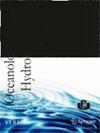Establishment and range expansion of non-native fish species facilitated by hot springs: the case study from the Upper Sakarya Basin (NW, Turkey)
IF 1
4区 环境科学与生态学
Q4 OCEANOGRAPHY
引用次数: 2
Abstract
Abstract Non-native species can enter new habitats and ecosystems in a variety of ways. Suitable ecological conditions must exist for non-native species to reproduce in newly colonized habitats. Hot springs are suitable habitats for tropical, aquarium, and ornamental fish species. This paper presents the results of research on the distribution of non-native and native species in relation to environmental factors in the Upper Sakarya Basin, where several such springs are present. The fish fauna in the basin includes native (60% – 21 species, 14 of which are endemic) and non-native (40% – 14 species) fish species. Most of the non-native species (seven species) were found only in warm springs (minimum water temperature 16°C). In addition, 75 fish species belonging to 26 families were found throughout the Sakarya Basin. Hot springs were found to play an important role in the establishment of non-native species. The Kernel Density Estimation (KDE) results revealed that the non-native species density was high in the Upper Sakarya Basin where hot springs are common. This confirms that minimum and maximum temperatures are the main drivers of changes in the distribution of non-native fish species. Two aquarium fishes, Bujurguina vittata and Xiphophorus spp., are reported for the first time in the present study for inland waters of Turkey.温泉促进非本地鱼类物种的建立和范围扩大——以上萨卡里亚盆地(土耳其西北部)为例
非本地物种可以通过多种方式进入新的栖息地和生态系统。非本地物种要在新殖民的栖息地繁殖,必须有合适的生态条件。温泉是热带鱼、水族鱼和观赏鱼的适宜栖息地。本文介绍了萨卡里亚盆地上游存在多处外来和本地物种的分布与环境因子的关系。该流域的鱼类区系包括本地(60% - 21种,其中14种是特有种)和非本地(40% - 14种)鱼类。大部分非本地种(7种)仅在温泉水(最低水温16℃)中发现。此外,在整个Sakarya盆地发现了26科的75种鱼类。研究发现,温泉对外来物种的形成起着重要作用。核密度估算(KDE)结果表明,在温泉较多的上萨卡雅盆地,外来物种密度较高。这证实了最低和最高温度是非本地鱼类分布变化的主要驱动因素。本研究首次报道了土耳其内陆水域的两种观赏鱼Bujurguina vittata和xiphohorus spp.。
本文章由计算机程序翻译,如有差异,请以英文原文为准。
求助全文
约1分钟内获得全文
求助全文
来源期刊
CiteScore
1.70
自引率
11.10%
发文量
8
审稿时长
>12 weeks
期刊介绍:
Oceanological and Hydrobiological Studies is an international journal published by the Institute of Oceanography, University of Gdańsk in Poland. The journal has 4 issues per year and contains papers on all aspects of the marine environment and hydrobiology. All manuscripts are reviewed by editors and independent experts. Based on the referees'' recommendations, the Editor will make a decision on whether to accept a contribution. All articles are published in English. The journal is open to all matters concerning the water environment, thus providing the readers with a wide spectrum of topics in every issue.

 求助内容:
求助内容: 应助结果提醒方式:
应助结果提醒方式:


